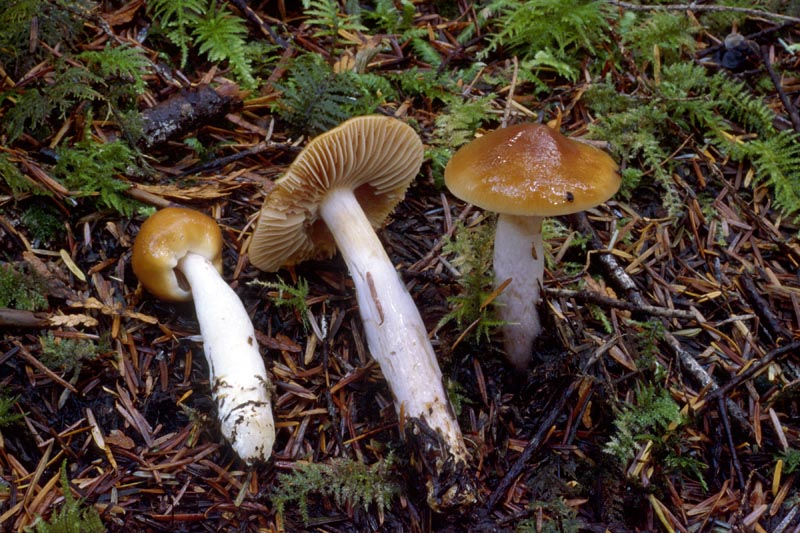Distribution: C. muscigenus varies in abundance from year to year, and in some seasons can be very common.
Habitat: mid- to high elevation conifer forests
Conservation Status: Not of concern
It can be confused with C. trivialis, which is a species associated with cottonwoods and aspen, and C. mucosus, a species with a white stipe that most frequently occurs with pines. C. vernicosus is another conifer associate that differs by fruiting in spring. Although rather widespread, it is relatively rare. members of this group that occur is subalpine forests include C. absarokensis and C. favrei, both of which are associated with willow. The myxaciums that lack clamp connections on the hyphae are represented in our area by C. vanduzerensis and a for of C. mucifluus, both of which are relatively common in mount conifer forests. The rare secotioid species T. pavelekii also lacks clamps and is related to these species. The European species C. collinitus has been considered the same as C. muscigenus, but the larger spore size characteristic of collections from North America suggests the matter could use more study.
Sources: Trudell, Steve and Joe Ammirati. Mushrooms of the Pacific Northwest. Portland, Timber Press, Inc. 2009.
PNW Herbaria: Specimen records of Cortinarius muscigenus in the Consortium of Pacific Northwest Herbaria database
CalPhotos: Cortinarius muscigenus photos



